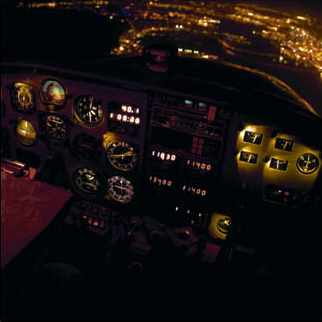Subscriber question:
"How can you prepare for nighttime forced landings?"— Wayne A.
Bob:
 “Great question! With the loss of most of our visual references, this situation creates some real challenges. I’d like you to approach the answer from several perspectives.
“Great question! With the loss of most of our visual references, this situation creates some real challenges. I’d like you to approach the answer from several perspectives.
Because of the additional challenge, I recommend planning your flight differently. Do a careful route study and plan your route with the maximum number of alternatives. It might take a little longer, but why not fly from airport to airport to improve our landing options.
How about flying a little bit higher than normal? It will give you more time and options in case of an emergency.
Hopefully, you already use flight following, but using it for night flights is great insurance. It’s very reassuring having someone to talk to.
Regular practice will help you be more comfortable when the real thing occurs. Few of us get as much real emergency practice as we should and this will only increase the anxiety factor when it happens at night. Remember the big three: Maintain aircraft control, analyze the situation, and take positive action.
Few of us practice emergency procedures enough, but how many of us EVER practice them at night? With a CFI on board, see how different an engine failure feels and looks at night. It may very well cause you to approach night flying a bit more carefully.
Slow down! Rushing or panicking may contribute to spatial disorientation. That’s never good. Spatial disorientation is a BIG problem at night!
One of our first challenges in a forced landing is identifying a landing location. Parking lots and roads might appear attractive, but personally, I don’t think we have the right to endanger others because of our emergency. Big fields are ideal, but without good moonlight, they might not be obvious to us. Frozen lakes in the winter might be attractive, but unless you know they can support you, they are very problematic.
While a tree landing is never an ideal solution, landing under control in the trees is very survivable! Where ever you choose to land, maintain a safe airspeed right on down to the ground. Fly the plane all the way down!
Think about the things that make an engine stop running and be real proactive about making sure none of them occur. At the first sign of trouble, land while you still have power.”
Digital tools like terrain awareness on a GPS or synthetic vision can change the equation for safety at night. See some examples in the video Terrain Awareness at Night or in Mountain IMC from GTN Next Level.
Bob mentions practicing emergencies at night. Do you agree that some emergency practice should be done at night?
